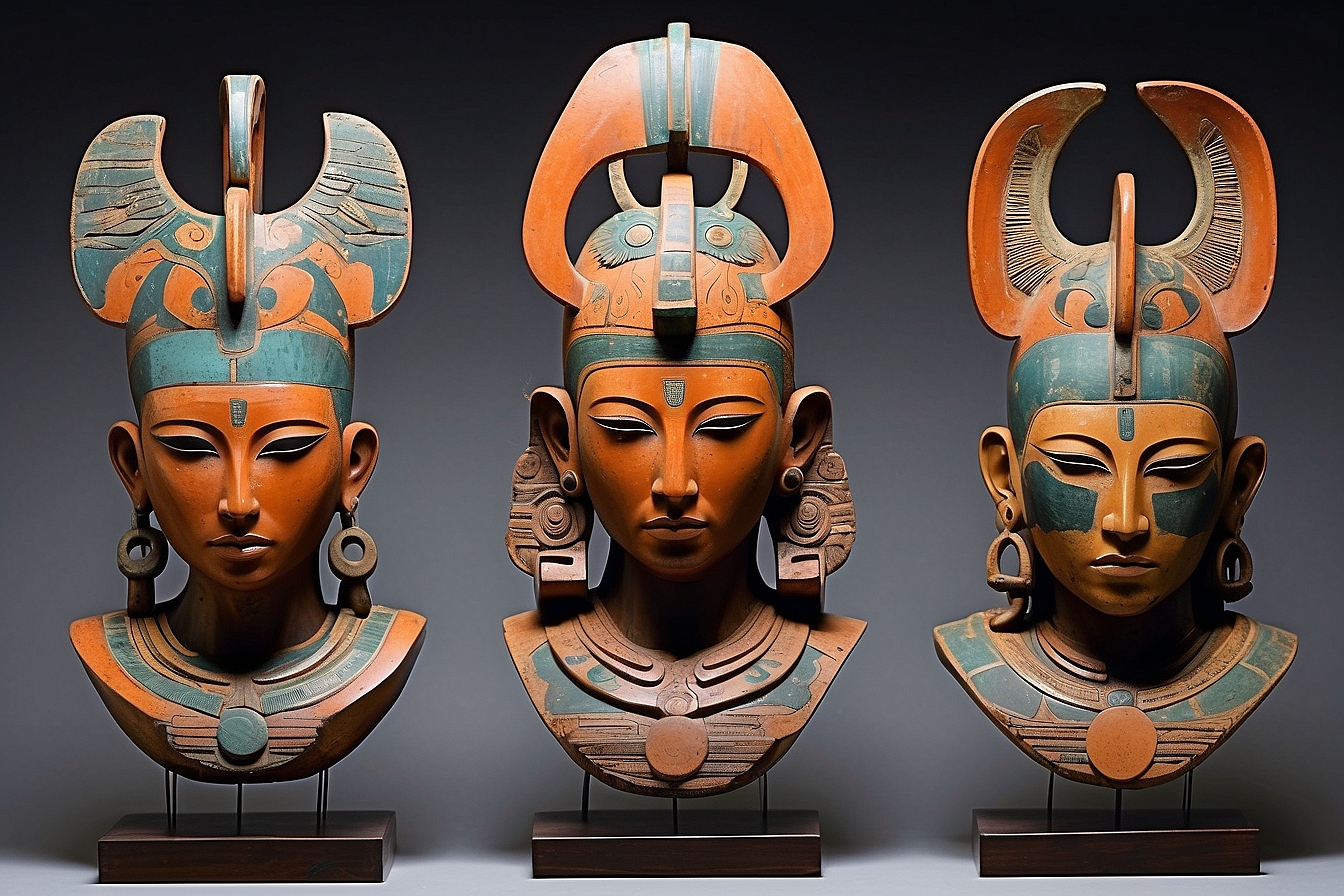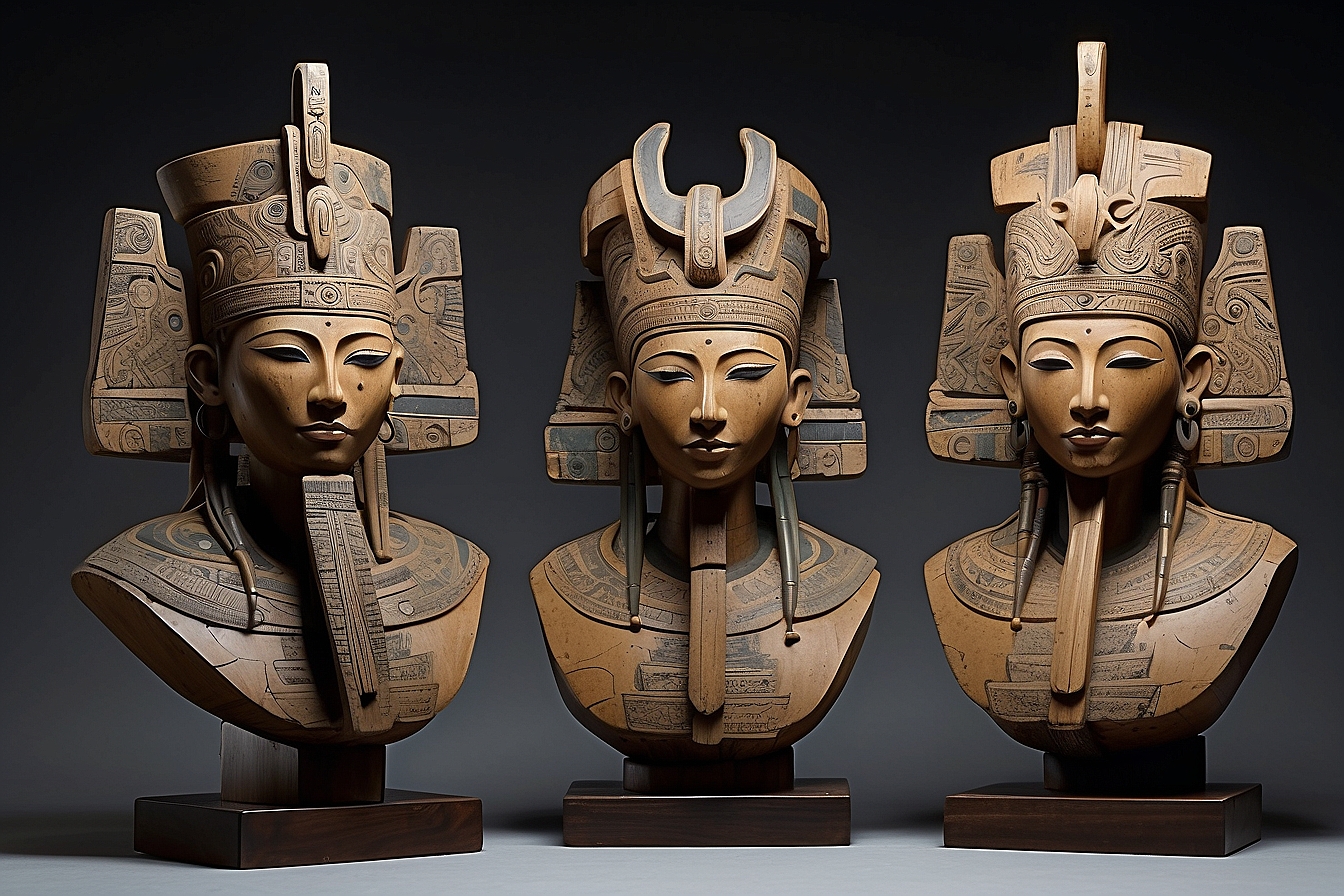Origins of Ayatan Sculptures
The origins of Ayatan sculptures are deeply rooted in the annals of ancient civilizations, serving as a window into the rich cultural tapestry of diverse societies. These timeless artifacts have emerged from civilizations across the globe, showcasing distinctive styles and historical contexts. For instance, the ancient Egyptian civilization crafted sculptures to venerate their gods, while the Indian subcontinent created sculptures embodying various deities and spiritual concepts. In addition, the Greek civilization also contributed to the diversity of Ayatan sculptures through their masterful craftsmanship and portrayal of mythical figures. Furthermore, the Mayan civilization in Central America produced intricate sculptures that depicted their religious beliefs and rituals. Exploring the vast array of Ayatan sculptures from different civilizations allows us to gain a deeper understanding of the artistic expressions, religious practices, and societal values that shaped these ancient cultures.
Intricate Artistry and Designs
Ayatan sculptures mesmerize admirers with their intricate artistry and designs, often portraying mythological narratives and historic events in vivid detail. The craftsmanship displayed in these sculptures is a testament to the skill and dedication of artisans from bygone eras. Each piece encapsulates a story, inviting observers to unravel its hidden meanings and delve into the artistic brilliance of its creators. The designs, whether portraying religious motifs or everyday life, exude a level of finesse and mastery that captivates viewers and transcends time itself.

Materials Used in Crafting
Artisans behind Ayatan sculptures employ a diverse range of materials, each contributing its unique characteristics to the artwork. Bronze, revered for its durability and malleability, was a favored medium in ancient times. Stone, such as marble or granite, provided a sense of permanence and grandeur to these sculptures, while wood offered a more organic and nuanced canvas for artistic expression. These materials not only dictated the sculpture’s appearance but also held symbolic significance within the context of the culture that crafted them.
Symbolism and Cultural Significance
Ayatan sculptures are imbued with profound symbolism, representing spiritual beliefs, cultural ideals, and societal norms. They serve as tangible embodiments of ancient wisdom and cultural heritage, acting as conduits between the past and present. Whether portraying revered deities, mythological tales, or societal roles, each sculpture carries layers of meaning, offering glimpses into the belief systems and values cherished by civilizations of yore. Their cultural significance extends beyond artistic expression, providing invaluable insights into the ethos of ancient societies and their ways of life.
Preservation and Restoration
Preserving Ayatan sculptures demands meticulous care and specialized techniques to maintain their originality and aesthetic allure. Preservation efforts encompass various methods, including controlled environments, careful handling, and periodic maintenance. Conservationists and experts employ scientific analyses and restoration techniques to safeguard these delicate artifacts from natural decay and environmental degradation. Restoration processes, when undertaken, require a delicate balance between preserving the sculpture’s authenticity and repairing damages incurred over time. These efforts aim not only to retain the sculpture’s visual splendor but also to conserve the historical and cultural significance embedded within each piece.
Display and Appreciation
Museums and art galleries serve as custodians, offering a platform for the public to appreciate and marvel at Ayatan sculptures. These exhibitions provide an immersive experience, allowing visitors to explore the intricacies and beauty of these timeless creations up close. Through curated displays and educational programs, viewers gain insights into the historical contexts, artistic techniques, and cultural meanings behind these sculptures. The settings in which these sculptures are exhibited often evoke a sense of reverence, enhancing the appreciation for the craftsmanship and narratives they encapsulate.

Ayatan Sculptures in Modern Times
Despite their ancient origins, Ayatan sculptures continue to captivate contemporary audiences, transcending temporal and cultural boundaries. In today’s world, these masterpieces inspire artists, designers, and creators across various disciplines. The influence of Ayatan sculptures permeates modern art, architecture, and design, infusing elements of their intricate patterns and symbolic motifs into contemporary creations. Additionally, the digital realm has embraced these sculptures, with their representations appearing in virtual spaces and interactive mediums, ensuring their relevance in the ever-evolving landscape of modern culture.
Ayatan Sculptures in Popular Culture
Ayatan sculptures have transcended their traditional context, making appearances in literature, cinema, and popular media. Their enigmatic allure and historical significance have rendered them as symbols of mystery, beauty, and antiquity in storytelling. From novels that weave tales around ancient artifacts to movies where these sculptures play pivotal roles in plotlines, their presence in popular culture amplifies their mystique and sparks curiosity about their origins and significance. Video games, too, often incorporate elements inspired by Ayatan sculptures, creating immersive experiences that pay homage to their timeless allure.
Collecting Ayatan Sculptures
Collectors worldwide seek Ayatan sculptures as prized possessions, recognizing their cultural significance and artistic value. Beyond their aesthetic appeal, these sculptures hold historical and investment value, attracting collectors who appreciate their rarity and craftsmanship. The act of collecting Ayatan sculptures extends beyond mere acquisition; it becomes a means of preserving cultural heritage and ensuring these artifacts endure for future generations. Collectors play a pivotal role in the perpetuation of the legacy and appreciation of these exquisite sculptures.
Future Prospects
As custodians of cultural heritage, ongoing efforts focus on preserving, studying, and promoting Ayatan sculptures. Collaborations between conservationists, scholars, and institutions aim to develop innovative preservation techniques and expand public access to these artifacts. Digital advancements enable wider dissemination of knowledge and engagement with these sculptures, fostering global appreciation and understanding. Initiatives for educational outreach and exhibitions aim to instill appreciation for Ayatan sculptures among younger generations, ensuring their continued relevance and significance in the ever-evolving cultural landscape.
Conclusion
In conclusion, Ayatan sculptures stand as enduring testaments to human creativity, skill, and cultural heritage. These masterpieces, woven with stories and symbolism from ancient civilizations, continue to captivate and inspire audiences worldwide. Their intricate artistry, historical significance, and cultural depth transcend time, inviting admiration and fostering a deep connection with our collective past. The preservation, appreciation, and interpretation of Ayatan sculptures contribute not only to the art world but also to our understanding of diverse cultures and their artistic expressions.

FAQs (Frequently Asked Questions)
1. What makes Ayatan sculptures so special? Ayatan sculptures are revered for their exquisite craftsmanship, profound cultural significance, and their ability to convey intricate stories and symbolism through artistry.
2. How are Ayatan sculptures preserved? Preservation involves meticulous care, specialized techniques, and periodic maintenance, ensuring their originality and aesthetic allure remain intact.
3. Where can one see Ayatan sculptures? Ayatan sculptures are often showcased in museums, art galleries, and private collections globally, providing opportunities for public appreciation and understanding.
4. Are Ayatan sculptures valuable collectibles? Yes, Ayatan sculptures are highly valued by collectors worldwide, not only for their aesthetic appeal but also for their historical and cultural significance, contributing to their market value.
5. How do Ayatan sculptures influence modern culture? Ayatan sculptures serve as a wellspring of inspiration, influencing contemporary art forms, literature, cinema, and even digital media, perpetuating their significance in modern times.
Elevate Your Space with Exquisite Sculptures from Buyamia!
Discover a world of artistic wonder at Buyamia! Delve into our curated collection showcasing captivating sculptures that exude craftsmanship and elegance. From modern abstract designs to classic masterpieces, explore a diverse array of unique pieces that resonate with your taste and style. Enhance your home or office with our stunning sculptures that capture the essence of creativity and aesthetic charm. Visit Buyamia.com today to browse our gallery and find the perfect statement piece that adds sophistication and character to your surroundings!
